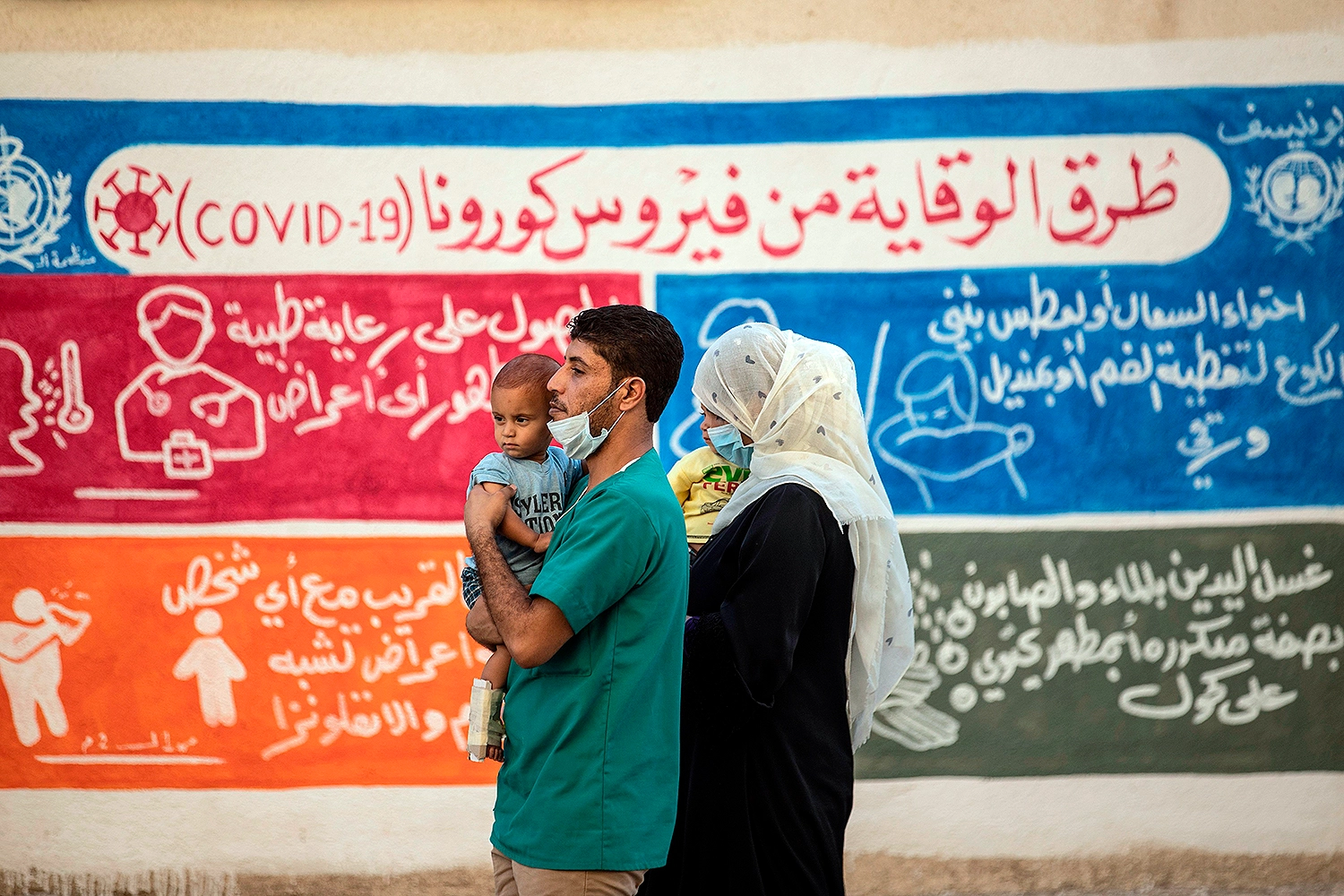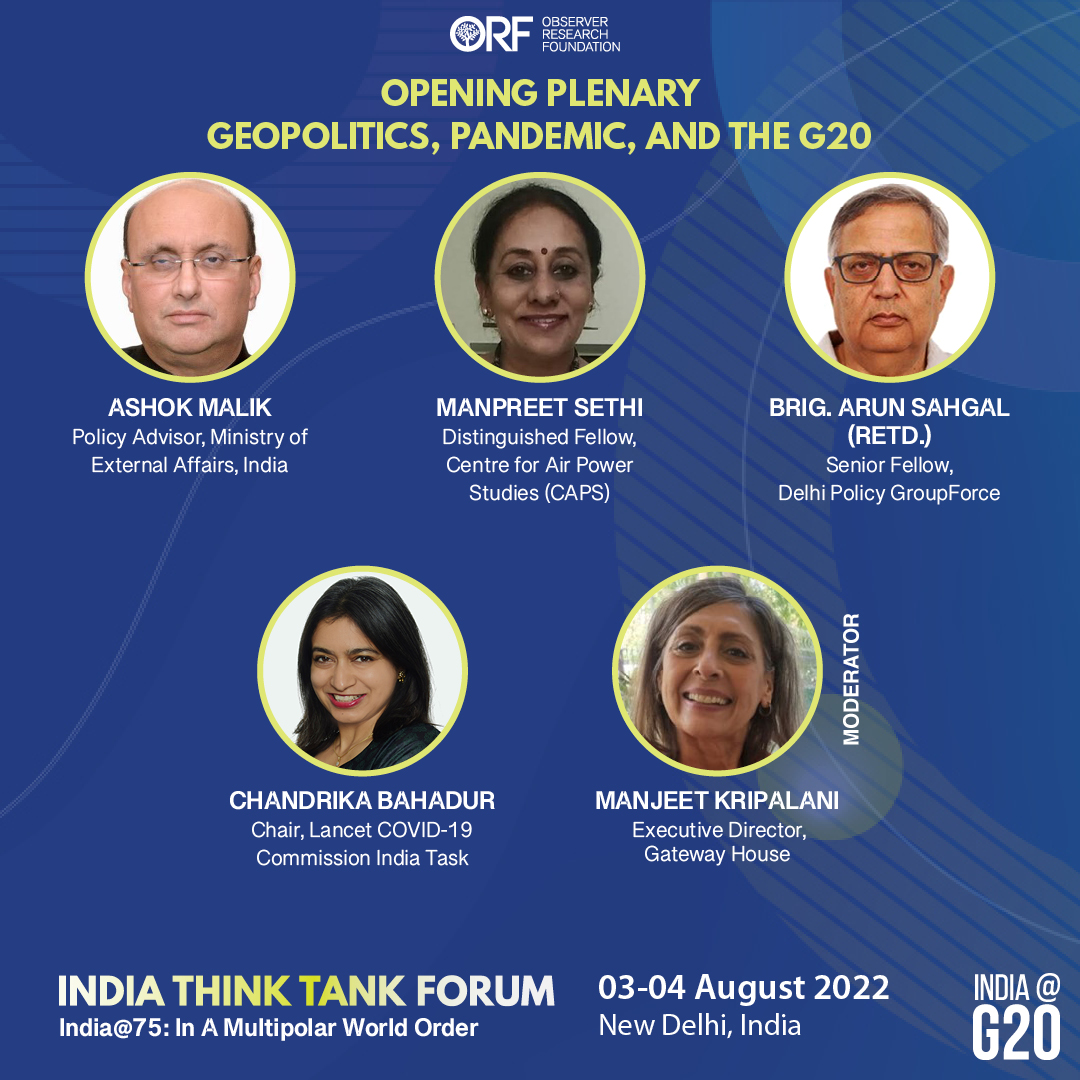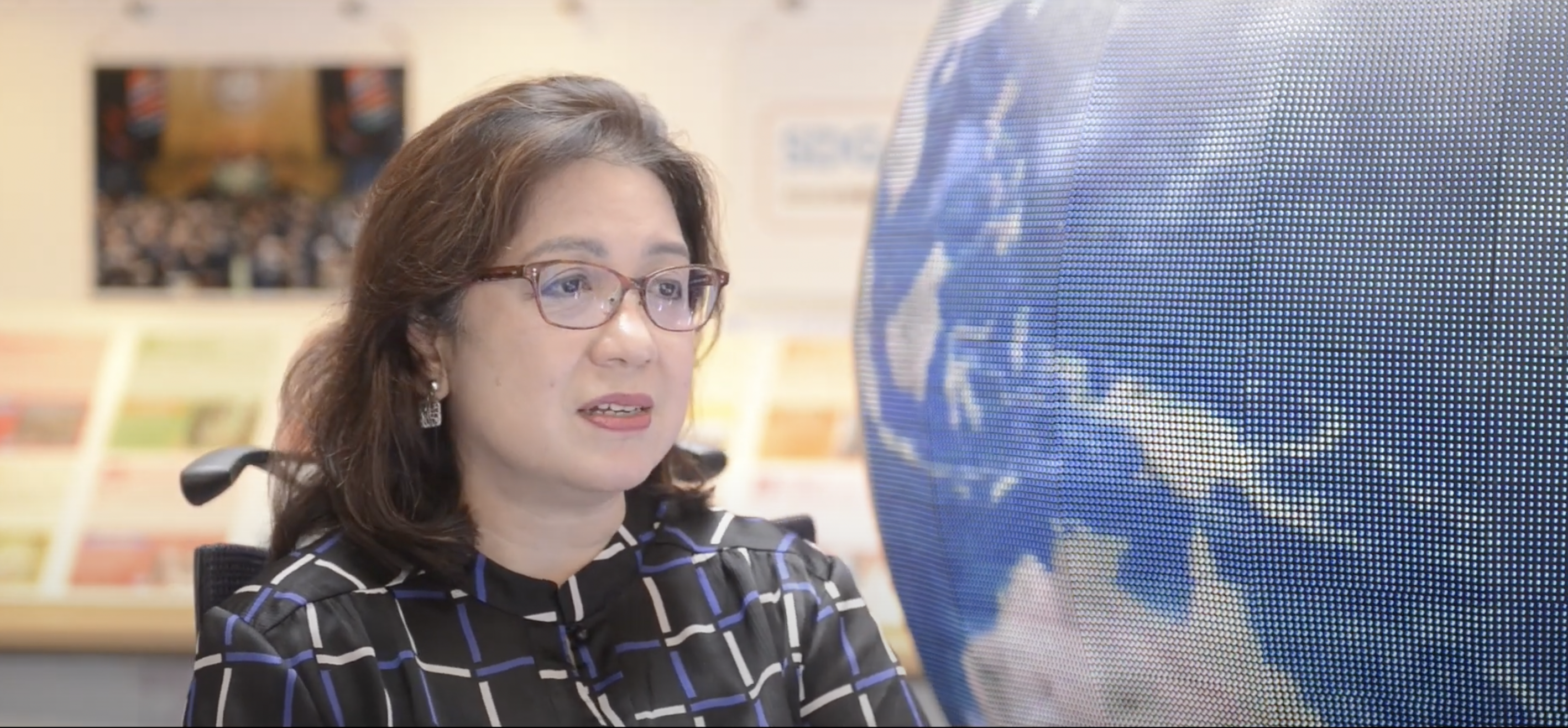The Status Quo Won’t Save Us From the Next Pandemic
FOREIGN POLICY
APLN member Helen Clark, former Prime Minister of New Zealand, co-wrote an article with Ellen Johnson Sirleaf, former president of Liberia, and summarises five interlinked lines of action that the global community needs to take to prevent the next pandemic threat from devastating the planet once again. Read the original article here.
It’s Dec. 30, 2019. A report from Wuhan, China, is circulating on the internet, warning that several people are struggling with an unexplained lung infection…
We all know what happened next.
SARS-CoV-2 became a runaway virus with the potential to become still more dangerous. To date, it has led to the deaths of an estimated 17 million people, and it’s expected to lead to a loss of at least $12.5 trillion in global output by 2024. It has worsened social cleavages, inequities, and trust in institutions around the world, exhausting and depleting health care workers and reversing years of progress toward achieving the United Nations’ Sustainable Development Goals.
In other words, the world learned—painfully—that we were not prepared to manage a new disease threat. And without change, it could all happen again. In fact, it could be even worse.
Pandemic threats are inevitable, but epidemics and pandemics are choices. World leaders now have a choice: prepare for the next pandemic—or risk a repeat of the disastrous last two and a half years.
As co-chairs of the Independent Panel for Pandemic Preparedness and Response, which was established by the director-general of the World Health Organization (WHO) in response to COVID-19, we spent many months studying how to prevent another pandemic like this one, and we continue to follow and report on progress in this area carefully. We believe there are five interlinked lines of action that the global community needs to take to prevent the next pandemic threat from devastating the planet once again.
First, countries must try to stop new infectious disease outbreaks from spreading beyond borders. Invisible viruses cannot be negotiated with, denied a visa or boarding pass, blocked from entry, arrested, or detained. But modern surveillance systems—if applied quickly and transparently—can help detect and halt them. For example, though New York state’s recent report of polio in its wastewater was not welcome news, it is much better to be transparent and take action than to let the disease fester and risk infections and spread.
If left to spread, a new disease—or even an existing disease like monkeypox—can cost, at best, billions of dollars to manage and, at worst, trillions of dollars, many millions of lives, and decades of development progress. A pandemic threat can ignite anywhere, and countries that detect and report one should be hailed—and not punished, as when unjustified travel bans were slapped on South Africa and neighboring countries when they reported the new omicron variant last year.
The WHO must confidently and rapidly alert the world to health threats of international concern. The organization moved in the right direction when it declared monkeypox a global health emergency. Countries should accept the WHO’s offers to help immediately investigate a new disease outbreak, no matter their income bracket or place of power in the world.
Second, the WHO must be strengthened so that it can perform its role as the directing and coordinating authority on matters of global health. The organization continues to require more sustainable core funding. Additionally, member states must act on its advice and work together to coordinate efforts against health threats rather than act purely in their own national interest.
Our panel has made recommendations to strengthen the WHO’s capacity and independence. These include limiting the most senior staff, including the director-general, to a single term of seven years so as not to be beholden to any country in a second-term campaign; stopping countries from foisting staff on the organization; and focusing more attention on quality technical support in its various country offices.
So far, the WHO’s member states have been slow to make changes. They have agreed to reform the organization’s funding to support its integrity and efficiency by reliably providing 50 percent of its core funding through unearmarked dues. This is as opposed to the current model, which resulted in more than 80 percent of core funding directed by voluntary donor funding, over which the WHO has very little control. (One thing to note: The increase in assessed dues to 50 percent won’t come until at least 2028.)
This is part of what needs to be done. The WHO also needs more authority. For now, it’s armed only with the existing International Health Regulations (IHRs), which, broadly, lay out the rules for how and when countries should report disease outbreaks and what the WHO can do in response. The IHRs hindered the speed of the global response to COVID-19, and work is underway to amend them—ideally with more precise timelines for reporting, clear responsibilities for countries to respond to WHO queries in a short time frame, and authority for the WHO to act on an outbreak even without a country’s permission.
A “pandemic treaty” currently being considered under the provisions of the WHO Constitution could help deliver some of what’s required to more effectively prevent and respond to pandemic threats—including clear agreements on sharing science, technology, and know-how on pandemic tools so that all countries benefit equitably. COVID-19 has made it all too clear that without such agreements, prevailing market forces allow for the wealthiest countries to buy lifesaving supplies such as ventilators, protective masks, and vaccines first for the highest prices, pushing poorer countries to the back of the line.
But most global treaties don’t produce results without including enforcement mechanisms. Here, positive incentives—such as rewarding countries that report outbreaks with immediate financial and technical help for responding—are important. Punishments, such as sanctions, are also required when countries fail to act in the common interest—like if a country fails to report a potential pandemic health threat as soon as it’s detected. Countries have provided inputs into the treaty’s basic outline, and the enforcements section is yet to be elaborated. A first draft is set to be discussed in December.
Overall, we are concerned that too much stock is being put into this treaty, which may not deliver. We are also concerned about the current planned pace of negotiation and agreement, which would not take effect until at least 2025. A treaty has a specific function and cannot fix the entirety of the international system for pandemic preparedness and response.
The third line of action is fiscal preparedness. Assessments from the World Bank and the World Health Organization estimate that about $30 billion is required globally every year to ensure all countries can adequately detect and respond to disease outbreaks. About two-thirds of those funds are expected from national budgets—and more than $10 billion must be made available in addition.
The new pandemic fund approved at the World Bank in June is an attempt to address this funding shortfall. Creation of this fund was one of the recommendations of the Independent Panel for Pandemic Preparedness and Response. The fund has the potential to be a vanguard in modern governance, particularly in new ways of raising and allocating funds to pay for global health security, a global common good.
We have advocated for a global public investment model, whereby all countries contribute to and access what they need from the fund based on their GDP, state of readiness, and national finances. We are encouraged that a growing list of countries—including Indonesia, a lower-middle-income country—is contributing to the fund. But we also warn that this funding should not come from or replace countries’ traditional aid budgets. They must supplement money allocated to long-standing successful organizations such as GAVI and the Global Fund.
The pandemic fund, which is still in development, also needs a governance model that is inclusive of countries across income brackets, as well as of civil society. Sticking to an outdated charity donor-beneficiary model would be a missed opportunity to transform financing models. Lower-income countries and civil society should not have to demand a place at the table—they are key partners and should be there as a right.
New funds for pandemic preparedness and response need not only derive from this new pandemic fund. The International Monetary Fund and the World Bank can also improve modalities for response funding. Regional banks and regional organizations all have the ability to leverage and incentivize funding.
Fourth, all countries must have access to tools that thwart disease outbreaks. The deadly lag in delivering COVID-19 vaccines to people in lower-income countries continues to drive not only preventable deaths but also the continued transmission and evolution of the SARS-CoV-2 virus.
Here, too, charity is not the answer. Charity has not worked during the COVID-19 pandemic, where vaccine supply—dictated by market forces—has barely trickled down to lower-income countries. It won’t work for the next disease threat either.
The Access to COVID-19 Tools Accelerator (ACT-A)—a program begun in April 2020 to hasten the global distribution of COVID-19 tests, treatments, and vaccines—is currently under evaluation. That process must yield recommendations that lead to the creation of an end-to-end platform that ensures appropriate public health tools are developed and delivered everywhere they are needed. While mRNA vaccines, for example, have been a scientific achievement of huge merit, the requirement that they be transported in an ultracold chain makes delivery in warm, lower-income countries expensive and difficult. Medical countermeasures such as vaccines should exist to stop transmission and prevent deaths—and not become multibillion-dollar blockbusters for a handful of manufacturers, especially when public funding helped lay the table for success.
Finally, and most importantly, sustained global political leadership on pandemic preparedness and response is sorely lacking. Without it, the other four elements of needed reform could fail—and leave the door open to a new pandemic disaster. Preparing for and thwarting the next health threat is a job that will require the leadership of presidents and prime ministers who can mobilize whole-of-government and whole-of-society responses, coordinate across nations and regions, and promote accountability worldwide.
The WHO has proposed that it be at the center of the pandemic architecture, but we disagree. The organization must be equipped to play a major coordinating role in responding to pandemic threats, but those threats are too big and broad to be addressed by the health sector alone. Just about every sector of society and the economy has been affected by the pandemic, and just about every sector must contribute to the plans to stop new health threats from becoming social, economic, and health calamities. Thus, coordination goes well beyond what a single global health organization can offer. A broader ecosystem is involved.
A previous review conducted for the U.N. secretary-general in the wake of the Ebola crisis, and now the panel we co-chaired, have proposed that an independent, leader-level health threats council be created to promote coordination and accountability across countries and major institutions. Such a council would bring cohesion and oversight to the global architecture for pandemic preparedness and response.
Many discussions are still to be had about the form such a council would take—and whether, for example, it could be a joint council of the U.N. General Assembly and the WHO, or whether the U.N. secretary-general’s idea of an emergency council to manage a broader range of existential threats and complex emergencies might gain traction. But we remain convinced that such a council is a necessary part of the reformed global architecture for pandemic preparedness and response.
The world can’t travel back in time to December 2019 to thwart calamity, but the international community can act now to ensure that the experience of COVID-19 is never repeated. We cannot afford to settle for less than an ambitious and cohesive package of reforms. As former British Prime Minister Winston Churchill famously said, paraphrasing philosopher George Santayana, “Those who fail to learn from history are condemned to repeat it.”
Image: Syrians walk past a mural painted as part of a UNICEF and World Health Organization awareness campaign in the northeastern Hasakah province of Syria on Aug. 16, 2020. The mural displays tips on how to avoid COVID-19 after a spike in coronavirus infections in the area. DELIL SOULEIMAN/AFP VIA GETTY IMAGES




